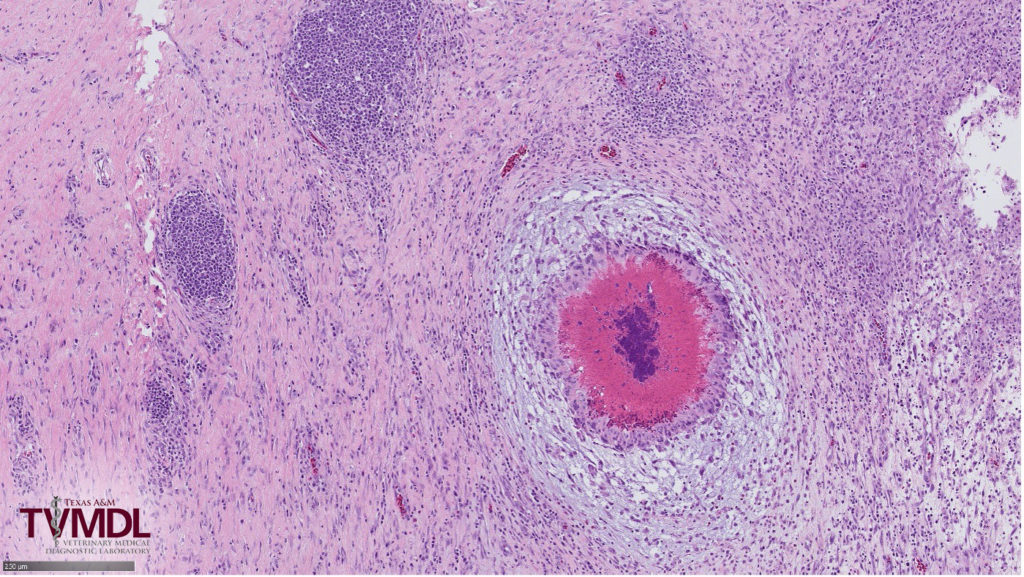Facial nodular cellulitis in broiler breeder pullets
Gabriel Senties-Cue, MVZ, EPAA, MS
Twelve 11 and 12-week-old broiler breeder pullets from two farms were submitted to the Texas A&M Veterinary Medical Diagnostic Laboratory (TVMDL) in Center, Texas for a diagnostic evaluation. The birds were submitted with a clinical history of having bumps on the face.
Upon clinical examination, the birds exhibited nodular protuberances, approximately 1 cm in length, on the face, close to the beak commissure, above the upper eyelid, and wattles (Figures 1 and 2). Those nodules contained a moderate accumulation of either fluid or caseous yellow exudate that was sometimes hemorrhagic.
Staphylococcus aureus in pure culture was isolated in moderate and large numbers from five of six nodules cultured. The histopathological examination revealed fibrinonecrotizing granulomatous cellulitis associated with large numbers of cocci-shaped bacteria (Figure 3), which is consistent with S. aureus infection.

Figure 1: Top view of nodular cellulitis in upper ocular region and wattle caused by S. aureus infection.

